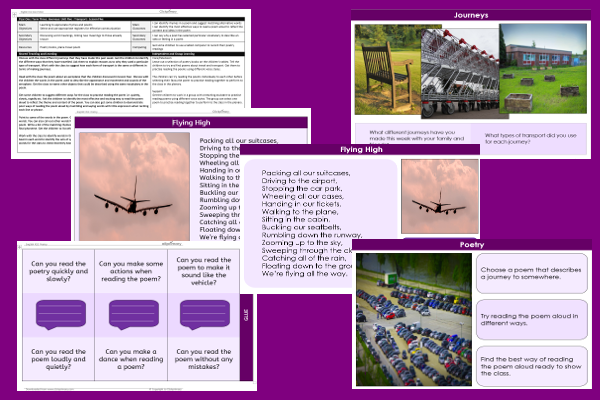Lesson Five – Poetry Performances

This English teaching pack for Key Stage One gets the children to practise reading poems about some different forms of transport using a range of voice styles, expressions and actions in a performance.
The class can select and model the best ways of reading a poem aloud when performing the content to an audience to bring the words alive with entertaining. actions.
Download this teaching pack including a lesson plan, classroom activities and an interactive presentation to practise reading poems about some different forms of transport using a range of voice styles, expressions and actions in a performance
Activities in this teaching pack include a shared reading text to explain why and how poets use words in poems to evoke ideas and feelings about a journey by plane and a table display card to rehearse reading poems about types of transport ready for a performance to the class.
The interactive presentation gets the children to explore how to practise reading poems about different forms of transport using a range of voice styles and actions.
This lesson is part of an English scheme of work to get the children to read and respond to poems about different ways to travel using a range of transportation vehicles, investigate syllables heard in different words and identify words that require capital letters. There are teaching activities for shared learning, differentiated worksheets to support independent learning and interactive presentations to introduce concepts and key skills.
-

Garden Numbers
Identify and model some of the different calculation techniques that can be used when adding pairs of single digit numbers
-

Summer Stories
Practise composing and presenting narrative stories with familiar settings to illustrate the events and experiences that could happen during the summer
-

Fraction Numbers
Investigate how to use concrete equipment, diagrams and calculations to identify and record the matching fractions of different numbers
-

Family Holiday Lists
Explore how to compile sentences punctuated using commas to list some of the special things that families can use, complete and experience on a holiday
